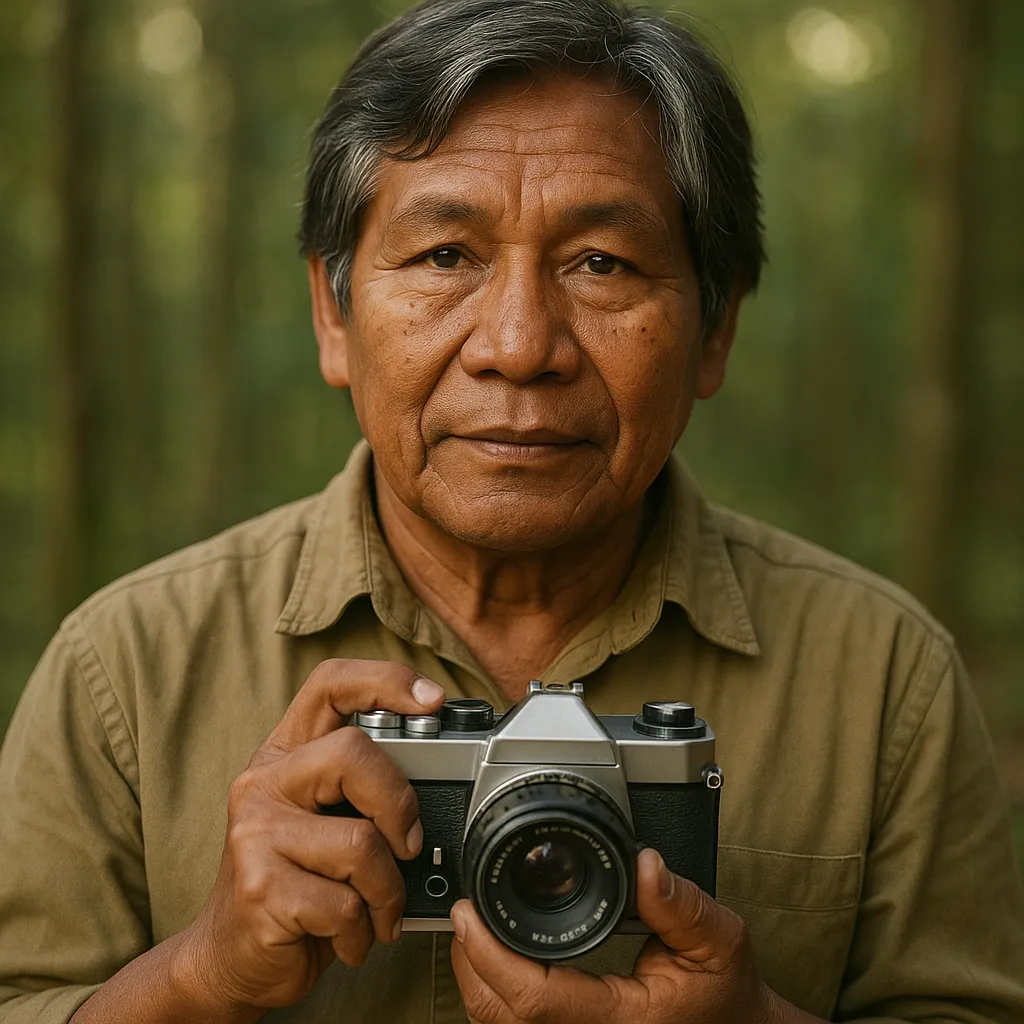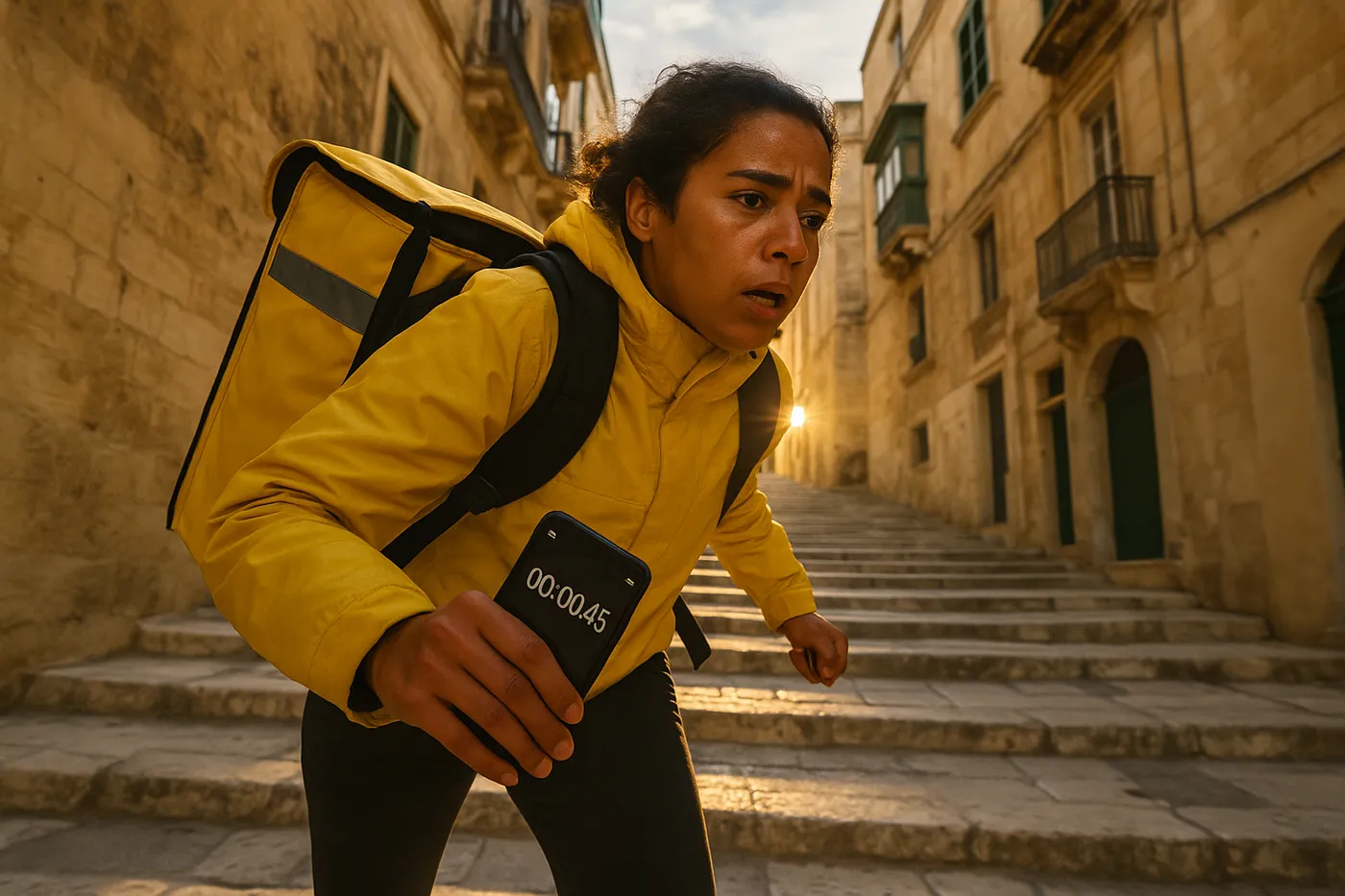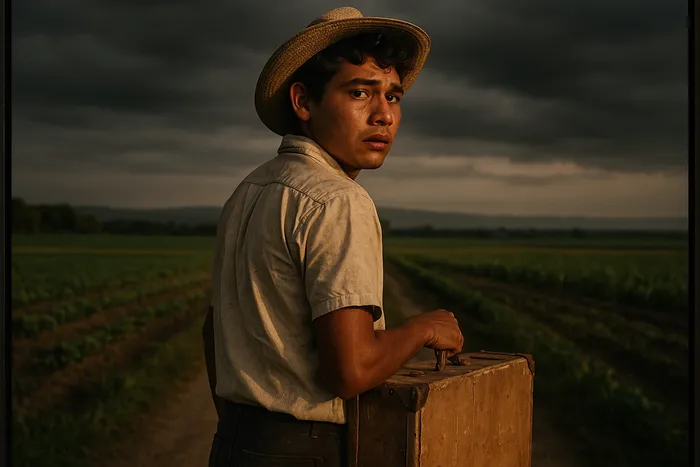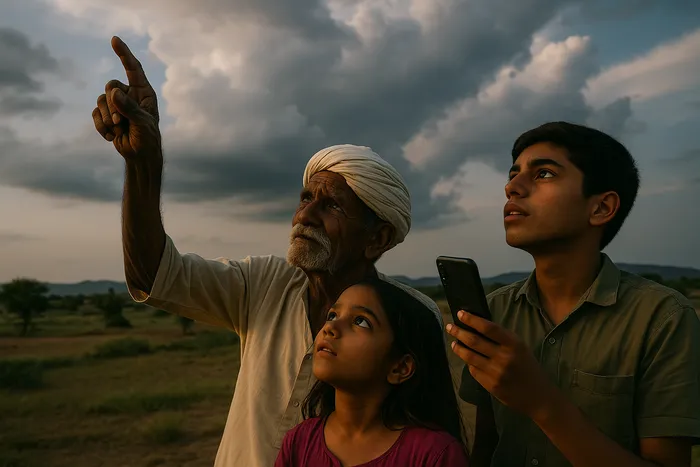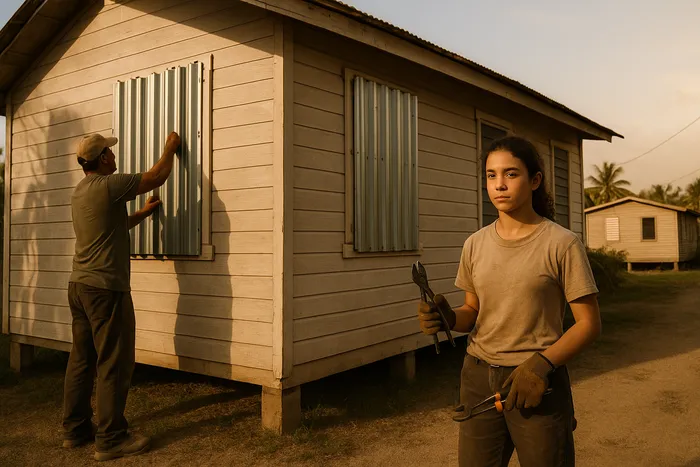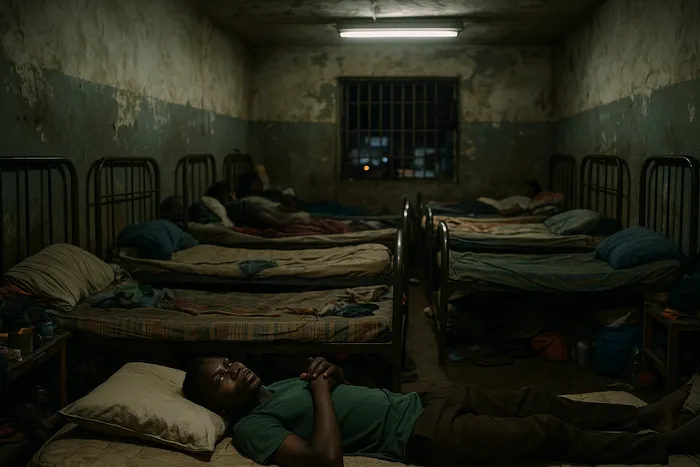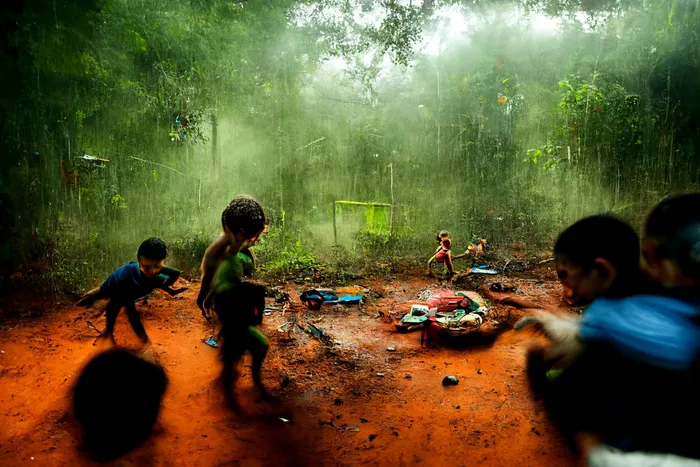The Rio Negro's water level drops lower each day, exposing ancient rocks that bear petroglyphs unseen for generations. For the indigenous and riverine communities of the Amazon Basin, 2024 marks not just another drought, but a crossing into uncharted territory where even ancestral knowledge must adapt to conditions beyond historical memory.
Sebastião Nascimento's documentation spans twelve communities across the western Amazon, capturing how traditional peoples navigate environmental collapse while maintaining cultural identity. His access, built over decades of respectful engagement, reveals intimate moments of adaptation: elders teaching children to read a transformed river, healers adjusting medicinal practices to stressed ecosystems, and communities combining traditional knowledge with new technologies to survive.
The drought has transformed the Amazon's waterways from highways into barriers. Communities once connected by rivers find themselves isolated, their economies disrupted, their food security threatened. Yet Nascimento's images reveal not victims but knowledge holders – people whose understanding of forest and river cycles positions them as essential voices in climate adaptation. His photographs document the transfer of this knowledge across generations, even as the environment that shaped it transforms beyond recognition.
What emerges is a story of resilience tested by unprecedented change. Traditional navigation markers sit high above waterlines. Sacred sites have become dusty depressions. Fish have retreated to depths that traditional gear cannot reach. Yet communities persist, their cultural practices evolving to meet new realities while maintaining connections to land and water that define their identity. This is documentation of frontline climate experience – where abstract global processes manifest as daily survival challenges met with wisdom accumulated over millennia.
Photographer Bio
Born in 1971 in a small community along the Rio Solimões, Sebastião Nascimento learned photography from missionaries but found his vision in his grandmother's stories of river life. She taught him that images, like rivers, carry memory – a philosophy that shapes his documentary practice. After studying visual communications in Manaus, he returned to the Amazon interior, choosing community documentation over commercial success.
His breakthrough came through patient relationship building, spending months in communities before ever lifting a camera. This approach earned trust that opened doors closed to outside observers. His work documenting traditional ecological knowledge has appeared in National Geographic, but he measures success by community response rather than international recognition. "If the people I photograph don't see truth in the images, I have failed," he says. This series represents 18 months of documentation across the 2023-2024 drought cycle, witnessing environmental conditions that push both ecosystems and human adaptation to their limits.
Image Captions
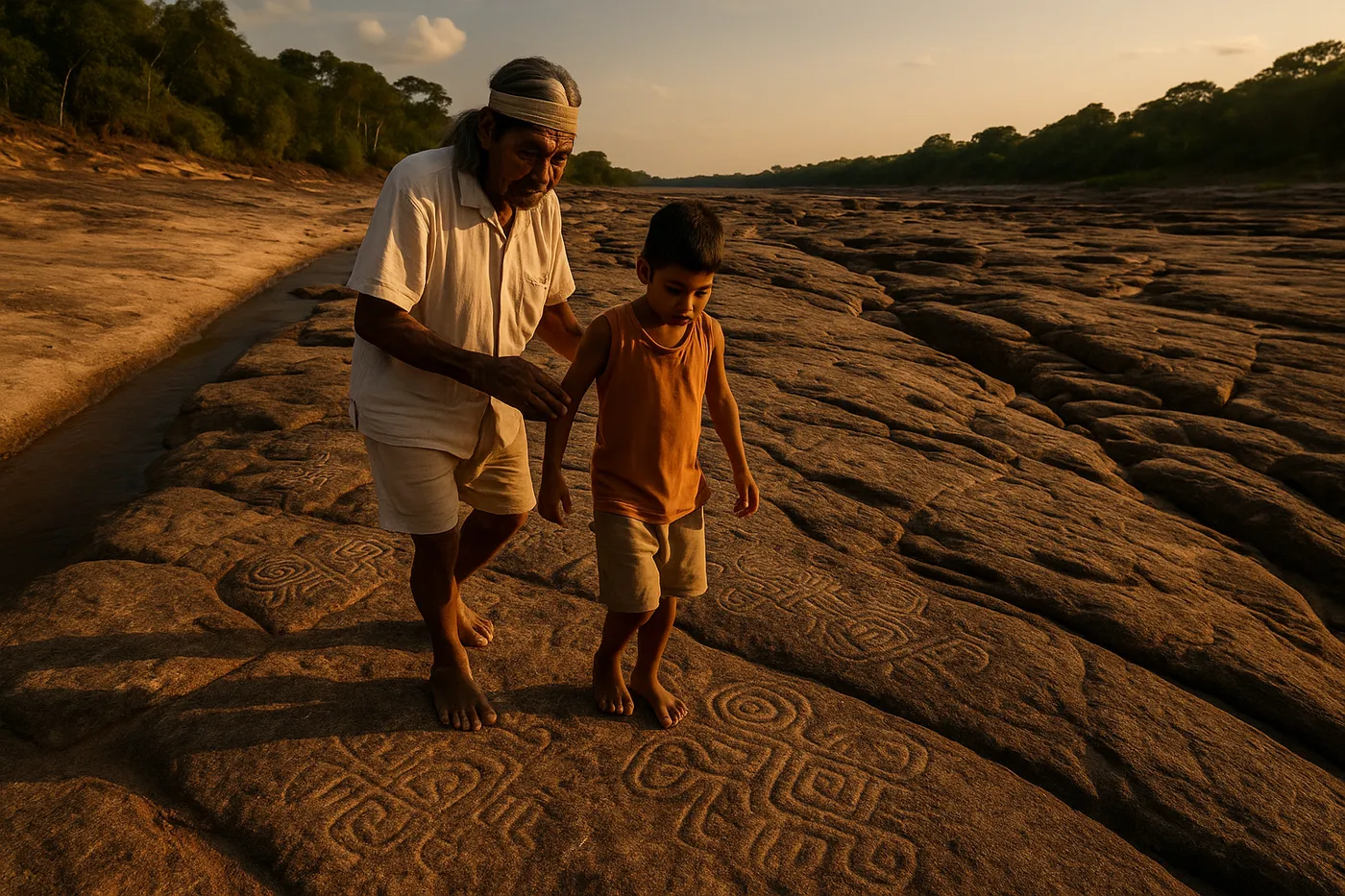
Photo 1: Traditional Navigation
An elder from the Tikuna community guides his grandson through the exposed bed of the Rio Negro near São Gabriel da Cachoeira, October 2024. The rocks they walk past, normally 5 meters underwater, bear ancestral markings that haven't been visible in living memory. "These stones are teaching us new lessons," the elder explains, pointing out navigation markers his own grandfather once showed him during a lesser drought 60 years ago.
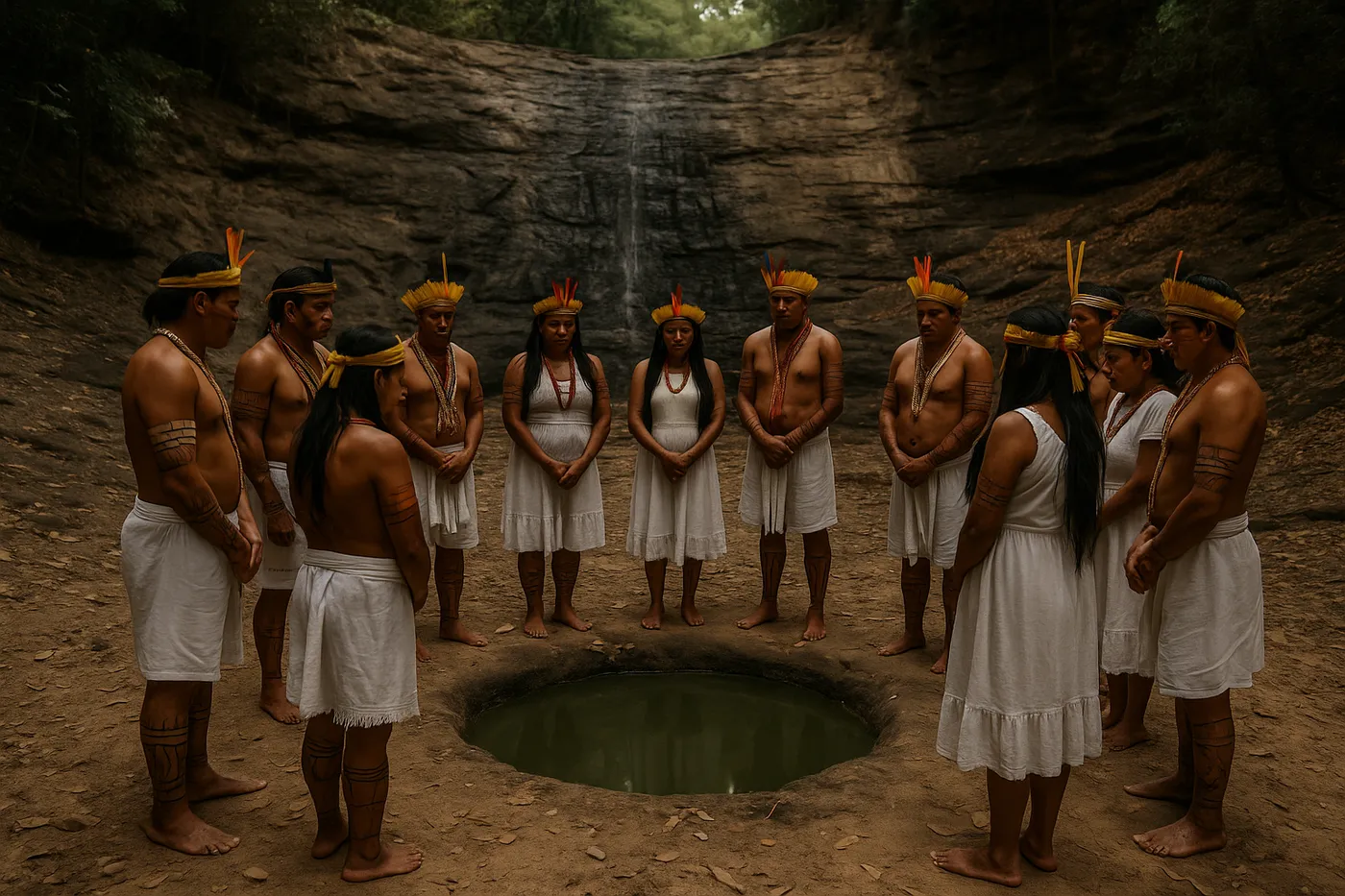
Photo 2: Sacred Waters
Members of the Baré community perform a water blessing ceremony at Cachoeira do Tarumã, November 2024. The sacred site, usually a thundering waterfall, has reduced to a single stream feeding a shallow pool. Despite the transformation, the community maintains their spiritual practices, adapting ceremonies to honor water's presence rather than abundance. The ritual now includes prayers for the water's return.
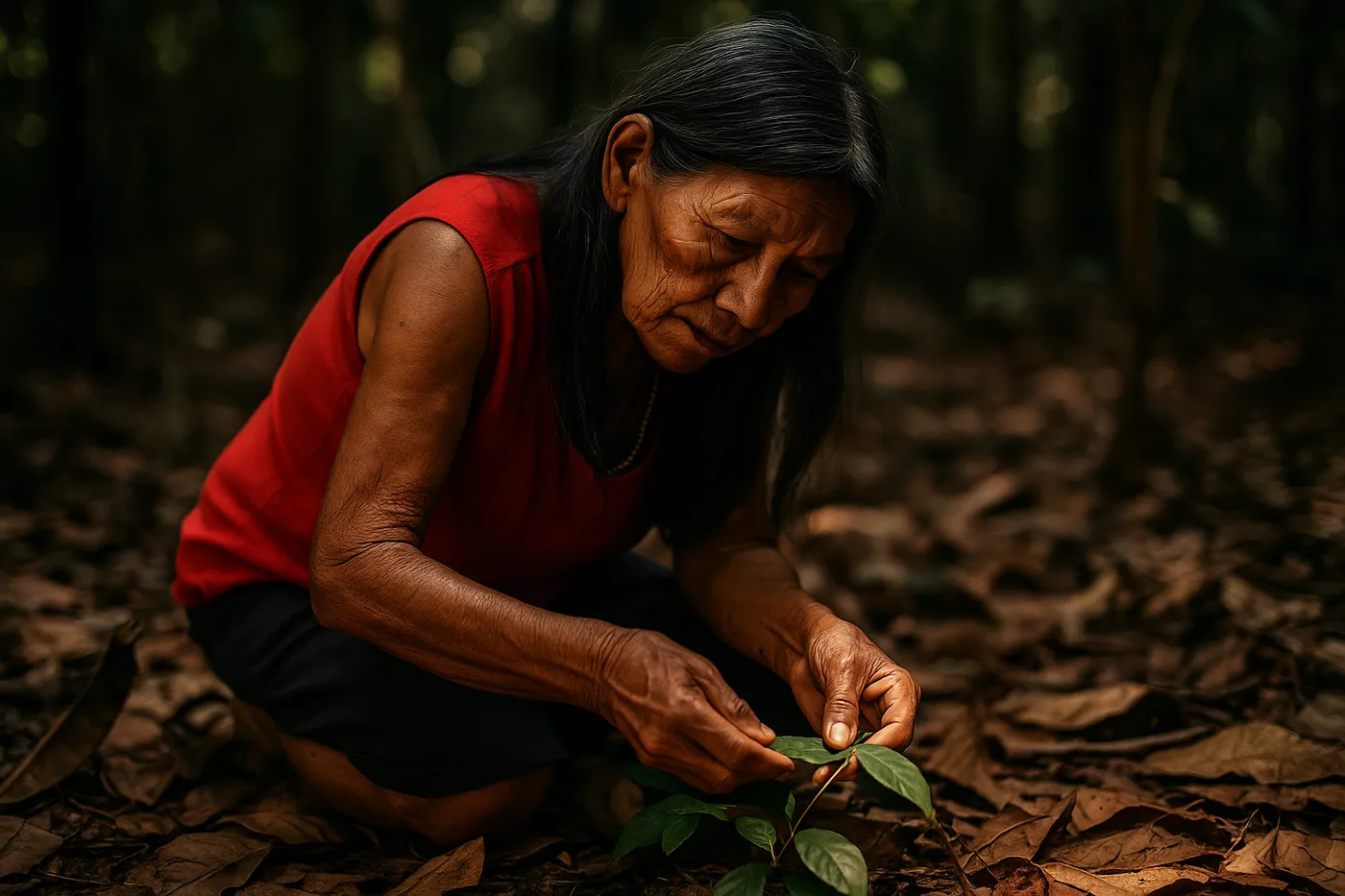
Photo 3: Forest Medicine
Dona Maria, a respected pajé (healer) of mixed Tukano and caboclo heritage, collects medicinal plants in the drought-stressed forest near her community, September 2024. Many traditional medicine plants have become scarce or altered their properties due to water stress. She adapts her practice, learning which substitutes work and teaching younger healers to recognize plants in their drought-altered states.
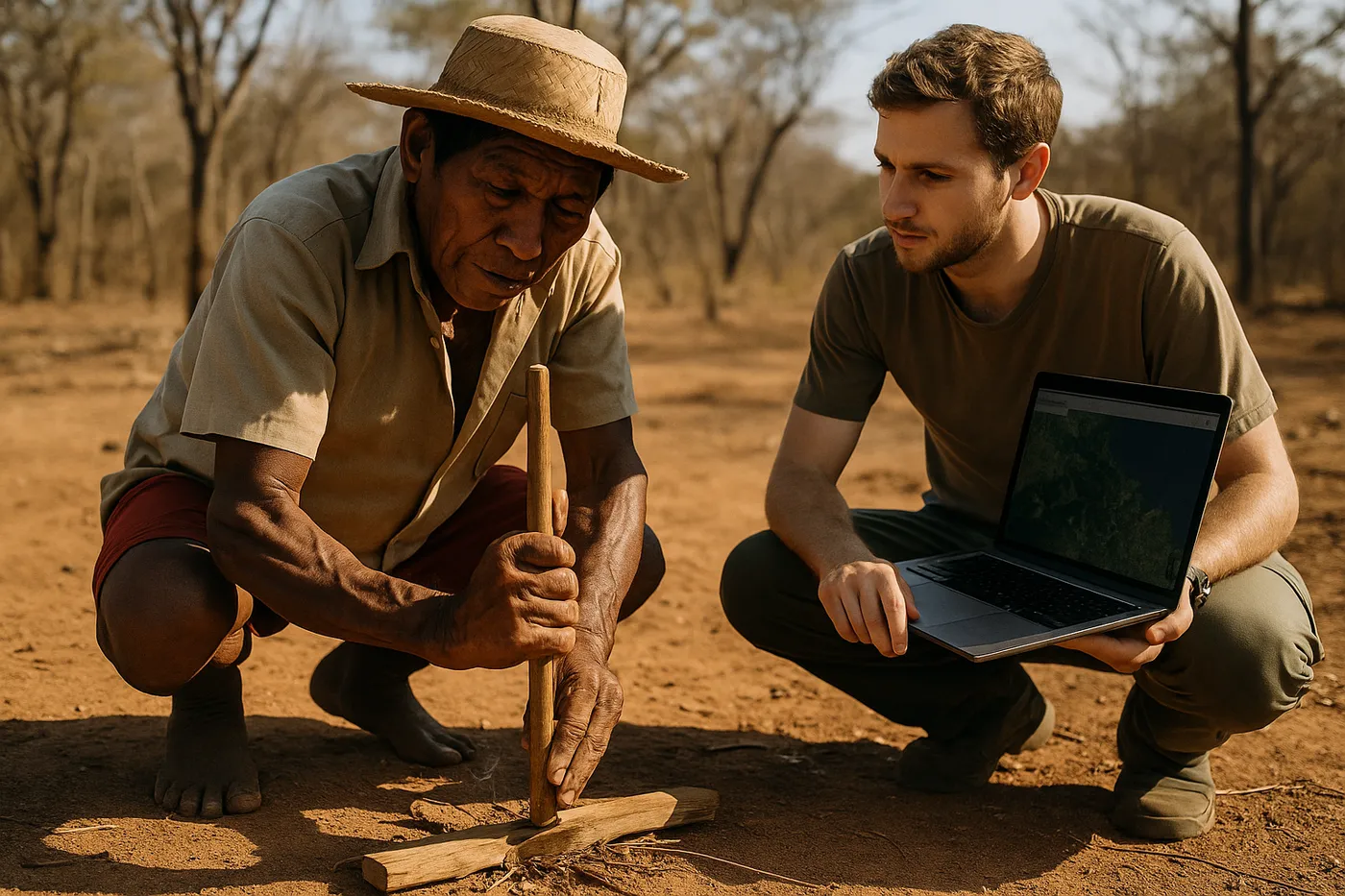
Photo 4: Children of Two Worlds
Indigenous youth from the multi-ethnic community of Novo Airão learn to use GPS devices while elders teach traditional river navigation, October 2024. The drought has made traditional knowledge more critical than ever, but communities recognize that survival requires bridging ancestral wisdom with modern tools. The children will need both to navigate their transformed homeland.
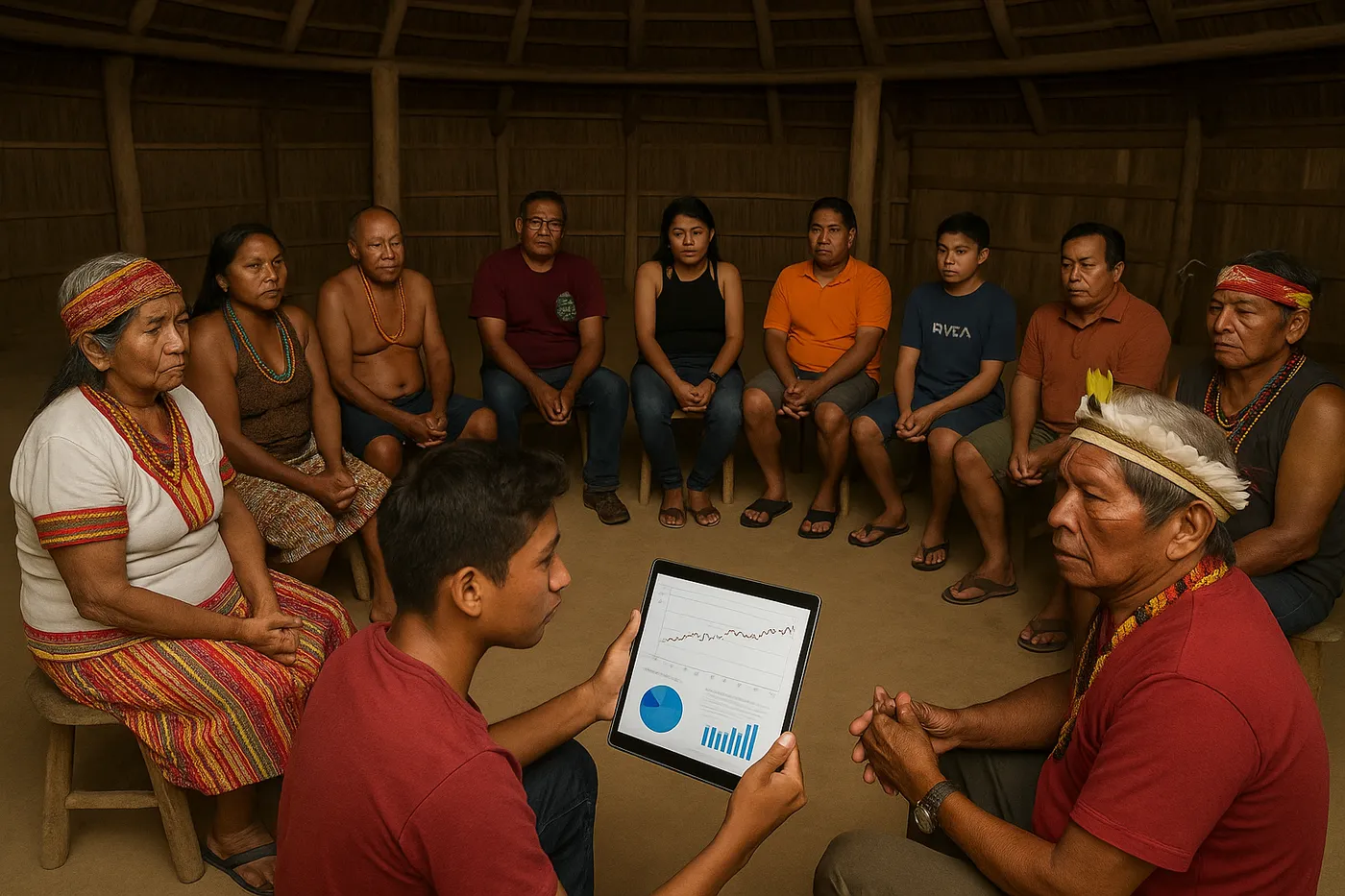
Photo 5: Community Council
A gathering in the Dessana community of Umari Norte discusses water management strategies, November 2024. The meeting combines traditional leadership structures with input from younger members who bring scientific data about climate patterns. Together, they develop plans that honor customary resource management while addressing unprecedented scarcity.
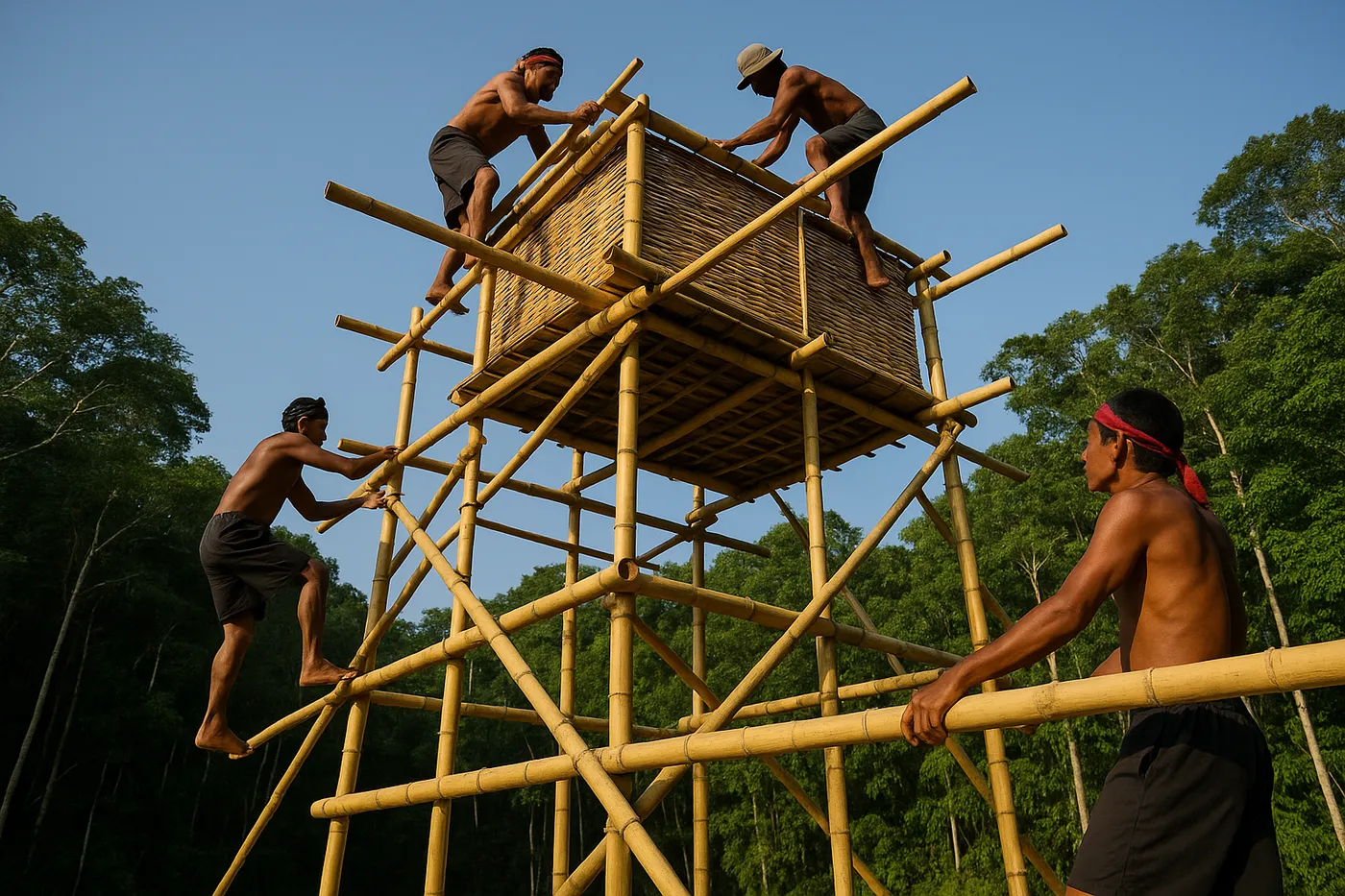
Photo 6: Adaptation Architecture
Community members in São João do Tupé construct an elevated water storage system, December 2024. The design adapts traditional stilt architecture to create gravity-fed distribution, combining indigenous engineering knowledge with materials provided by NGO partners. The project represents community-driven adaptation that respects cultural aesthetics while meeting new environmental challenges.
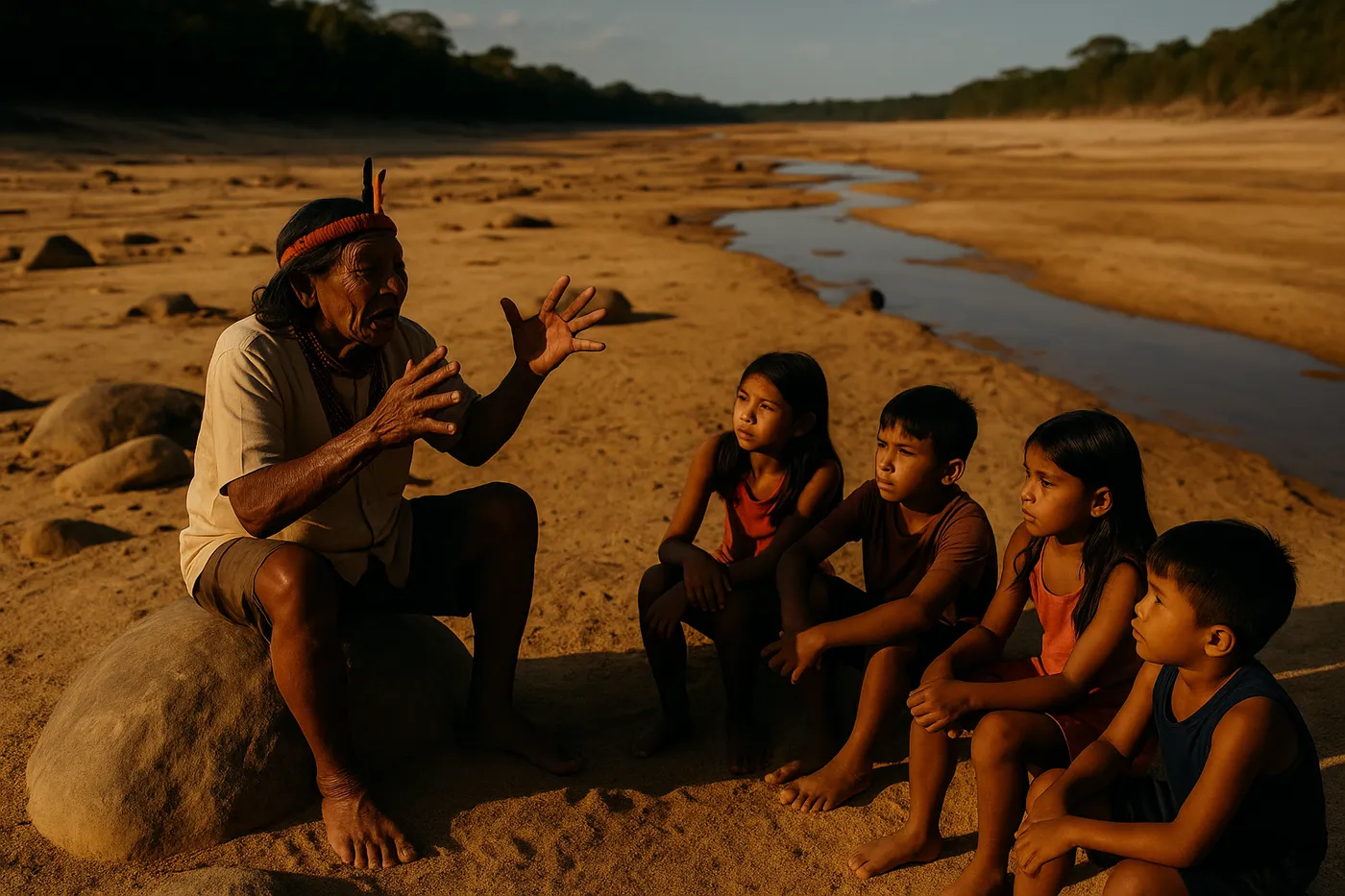
Photo 7: River Memory
Seu João, keeper of river stories for the Baniwa people, shares navigation tales with children at a dried section of the Rio Içana, November 2024. The riverbed, transformed into a sandy expanse, becomes a classroom where oral tradition meets visible evidence of change. His stories now include the time when rivers ran dry, ensuring this knowledge enters the collective memory.
Image Prompts
Photo 1 - Traditional Navigation An elderly indigenous man with deeply weathered brown skin wearing simple cotton clothing guides a young boy across exposed riverbed rocks covered in ancient petroglyphs, Rio Negro Brazil, wide-angle environmental portrait at golden hour, shot on Canon EOS 5D Mark IV with 24mm f/8 lens, warm natural lighting highlighting the texture of exposed stones and creating long shadows, compositional leading lines formed by the dry riverbed channel, earthy browns and ochres with touches of remaining green vegetation on distant banks, contemplative and educational mood, documentary photojournalism, National Geographic style environmental portrait, professional photography showing indigenous knowledge transfer, World Press Photo award winning photo series
Photo 2 - Sacred Waters Indigenous Baré community members in traditional dress perform ceremony around small remaining pool at base of dried waterfall, Cachoeira do Tarumã Amazon Brazil, medium shot showing full ritual circle, shot on Canon EOS 5D Mark IV with 35mm f/5.6 lens, diffused forest light filtering through canopy, composed with sacred pool centered and community forming natural frame, muted earth tones with ceremonial white clothing creating contrast, spiritual reverence despite environmental crisis, documentary photography capturing climate change impact on indigenous spiritual practices, professional photojournalism, World Press Photo award winning photo series
Photo 3 - Forest Medicine Elderly indigenous woman healer carefully selecting medicinal plants from drought-stressed forest floor, her weathered hands examining leaves in filtered sunlight, Amazon rainforest Brazil, intimate environmental portrait at 45-degree angle, shot on Canon EOS 5D Mark IV with 85mm f/2.8 lens, dappled forest light creating natural spotlight on her concentrated expression, shallow depth of field isolating subject from complex forest background, rich greens contrasting with dry brown leaves indicating drought stress, mood of careful adaptation and traditional knowledge, documentary photography, National Geographic quality, professional photojournalism, World Press Photo award winning photo series
Photo 4 - Children of Two Worlds Group of indigenous children gathered around elder holding traditional carved stick while one child holds GPS device, all studying exposed riverbed, Novo Airão Amazon Brazil, environmental group portrait, shot on Canon EOS 5D Mark IV with 50mm f/5.6 lens, bright afternoon light creating clear details of both traditional and modern tools, composed with elder centered and children forming natural circle, warm skin tones against bleached riverbed sand, hopeful mood showing knowledge synthesis, documentary photography capturing cultural adaptation, professional photojournalism, World Press Photo award winning photo series
Photo 5 - Community Council Indoor gathering of multi-generational indigenous community members seated in circle discussing water management, mix of traditional dress and modern clothing, young member holding tablet showing climate data, Dessana community Brazil, wide interior shot, shot on Canon EOS 5D Mark IV with 24mm f/4 lens and bounce flash, even lighting showing all faces clearly, circular composition emphasizing democratic discussion, earth tones with pops of color from woven textiles, serious but collaborative atmosphere, documentary photography of climate adaptation planning, professional photojournalism, World Press Photo award winning photo series
Photo 6 - Adaptation Architecture Indigenous community members constructing elevated bamboo water storage structure using traditional building techniques, multiple workers at different heights of construction, São João do Tupé Amazon Brazil, wide-angle architectural documentary shot, shot on Canon EOS 5D Mark IV with 24mm f/8 lens, clear morning light showing construction details and community cooperation, diagonal composition following structure's lines with workers creating human scale, natural materials palette of bamboo yellows and forest greens, industrious and innovative mood, documentary photography showing climate adaptation, professional photojournalism, World Press Photo award winning photo series
Photo 7 - River Memory Elderly indigenous storyteller gesturing expressively while seated on large exposed river stone with group of children listening intently, vast dried riverbed stretching behind them, Rio Içana Amazon Brazil, environmental portrait with narrative element, shot on Canon EOS 5D Mark IV with 35mm f/5.6 lens, late afternoon golden light creating dramatic shadows and warm tones, rule of thirds with storyteller positioned left and riverbed creating leading lines, ochre and sand tones with blue sky reflection in remaining water pools, mood of cultural transmission and environmental witness, documentary photography, National Geographic style, professional photojournalism, World Press Photo award winning photo series
Photographer Portrait
Professional portrait of a middle-aged Brazilian man with indigenous features, warm brown skin, gentle eyes reflecting years of patient observation, silver-touched black hair, wearing simple khaki shirt, holding vintage film camera, natural outdoor lighting with soft forest background, environmental portrait style, shot in square format, professional portrait photography

